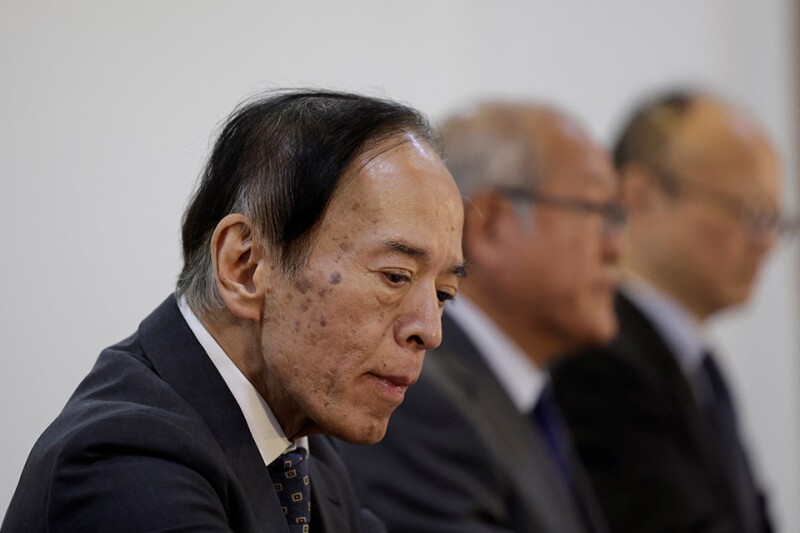
In a cruel world of soaring inflation and cost-of-living crises, it is sometimes a shock to remember that there is still one country hanging on to negative interest rates. But even in Japan, always one to dance to its own rhythm, the time is surely approaching when it must accept rising rates.
The Bank of Japan (BoJ) decided in January 2016 to apply a rate of minus 0.1% to excess reserves financial institutions placed with the central bank – the first time it had adopted negative interest rates. It was prompted to do so because of a stubbornly stagnant environment for growth, which, it reasoned, wasn’t going to get any better without drastic measures: Japan’s demographics are dismal, and its older people don’t spend or invest.
The world has changed beyond recognition since then, but apparently not so much in Japan, which still applies negative rates almost eight years on. It also has a policy of suppressing yields on Japanese government bonds (JGBs).
You see the problem: any rise in interest rates increases the cost of servicing an absurd amount of debt
Today, the policy is straining. In early October, the BoJ bought ¥1.9 trillion ($12.7 billion) of JGBs across various maturities in a single day, with much of the purchases unscheduled. It apparently did so because yields on 10-year JGBs reached 0.783%.
That might not sound much – the same day, yields on US 10-year Treasuries touched 4.85% – but it is the highest level for a decade, and would appear to indicate that the markets think an end is in sight for capped yields and negative rates. The more the market believes this to be the case, the harder it will be for the BoJ to implement its policy.
In any case, why should it continue to do so? The latest numbers – for August – showed inflation was above the BoJ’s 2% target for the 17th consecutive month. Nationwide core CPI was up 3.1% year on year; the so-called core-core index, with fresh food and fuel removed, was up 4.3%. OECD projections suggest 1.3% GDP growth for Japan in 2023 – and in the second quarter GDP was up an almighty 6% year on year, albeit that was a post-Covid one-off.
This is what Japan wanted. In fact, since the BoJ purchases such vast amounts of its own bonds, it is what Japan has paid for, printing new money with the express intention of engineering inflation.
Furthermore, negative rates aren’t even the policy of governor Kazuo Ueda but his predecessor, Haruhiko Kuroda. Surely, it’s time to let go?
Crazy
Well, it would be, but there is a problem. Japanese public debt relative to the economy is, for want of a more precise financial term, crazy. It is equivalent to 263% of GDP, by far the highest of any developed nation. So, you see the problem: any rise in interest rates increases the cost of servicing an absurd amount of debt. Even the fact that 43.3% of this debt is held by the BoJ itself, and most of the rest domestically, is only partial mitigation.
The currency, around its lowest level for 20 years, is also an issue. But, as one commentator puts it: “The free-lunch period is coming to an end”.
Reuters conducted a survey of economists in September, finding that a majority expect the BoJ to end negative rates in 2024; the median position on timing is April to June. Also, 80% expect the 10-year yield control scheme to go by the end of 2024. Ueda said in September that the BoJ might have enough data by year-end to judge whether it could end negative rates.
So, if that happens, what next? One argument is that Japanese stocks, which benefited from a cheap yen as a carry-trade play, may weaken. As discussed, a sharp rise of rates would make Japan’s public-sector debt unsustainable, so any change will surely be modest.
Any rise would be good news for banks, which have had to deal with negative rates at the same time as miserable growth and worsening demographics. They have all had their own ways of dealing with this – acquisitions in southeast Asia, new approaches to wealth management, global tie-ups, digital innovation – but the facility to earn anything at all from lending would make life considerably easier.